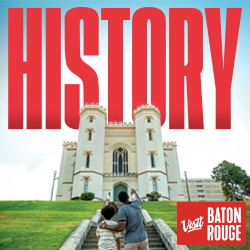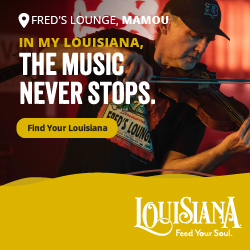Florida, the land of sunshine, has a cerebral side, too — its history.
From conquistadors to astronauts, inventors, writers and performers, many notable figures have lived, worked and innovated in Florida. Travelers can walk in their footsteps in historic cities, notable homes and impressive museums around the state.
Your groups can have a grand time peering into the past at these Florida destinations.
Historic St. Augustine
History practically slaps you in the face while you enjoy Atlantic breezes in St. Augustine. The big star is the Castillo de San Marcos, the oldest masonry fort in the continental U.S. After invaders burned nine wooden forts, Spanish colonists got serious with this behemoth 23 years in the making, starting in 1672. It’s a National Park Service property and guarantees a solid experience for groups.
When Ponce de Leon scouted for the Fountain of Youth in 1513, he wasn’t the first on the scene. Timucua Indians had beat him by 3,000 years. Learn about them, Ponce de Leon and Don Pedro Mendez de Aviles, who established the first St. Augustine settlement in 1565, at the 15-acre Fountain of Youth Archeological Park. Go ahead and sip from Ponce’s Spring of Eternal Hope — it can’t hurt.
Visitor attractions are in a concentrated area, and a fun way to get a good history lesson is the Colonial Experience Living History Tour. See a blacksmith at work, cover your ears when the musket fires, and climb a 35-foot watchtower for a panoramic view. St. Augustine has its share of kitschy fun — the original Ripley’s Believe It or Not! Museum is adjacent to the Castillo de San Marcos — but that’s part of Florida history, too.
Kennedy Space Center
Get ready to blast off at Cape Canaveral’s Kennedy Space Center, at least figuratively. There’s more than a day’s activity here.
First up is Heroes and Legends, which highlights NASA’s heroes and legends in what the space center calls “a 4-D multisensory experience.” Its culminating exhibit is the U.S. Astronaut Hall of Fame, where you can get a special memento through a “photo op” with a Mercury astronaut. Elsewhere, there’s a way to encounter an in-the-flesh astronaut through the Dine With an Astronaut program.
The Kennedy Space Center bus tour includes the launch pads where Apollo astronauts first lifted off for the moon, and new in 2019 is an enhanced telling of the Apollo 11 lunar landing to mark that event’s 50th anniversary. The overwhelming focal point of the Apollo/Saturn V Center is a Saturn V moon rocket, one of only three in the world. The Rocket Garden remains a favorite stop. A Delta II rocket is the next addition. It’s the type that flung two Mars rovers and a Mars lander into space.
The Ringling
Visiting The Ringling in Sarasota is like entering a circus tent and discovering there are more than three rings. It’s a destination that keeps on giving.
As you might expect, the Ringling Museum of the American Circus. which includes a 44,000-piece circus model, the largest in the world, is the initial magnet for many visitors. But then they discover the Museum of Art, with works by Rubens and Gainsborough, Greek and Roman antiquities, and so much more; a beyond-description five-story, 56-room mansion named Ca’ d’Zan, built for $1.5 million and restored for 10 times that amount; an intact Italian theater from 1798; an art library; 65 acres of glorious gardens; and multiple dining options.
“We are a very diverse destination,” said public relations specialist Virginia Harshman in a classic understatement. “People come for one reason and discover other reasons to stay longer than planned.”
Edison and Ford Winter Estates
Thomas Edison and Henry Ford weren’t just a great inventor and a great innovator. They were pals — and neighbors — in Fort Myers. Edison got there first in 1885 and quickly invested in real estate along the Caloosahatchee River. His guesthouse accommodated folks such as Harvey Firestone, Herbert Hoover and Ford. Ford liked the neighborhood so much that he bought the house next door, a two-story Craftsman-architecture place named the Mangoes.
The houses are open, and 20 acres of gardens are available to roam, too. Ficus trees that Edison, Ford and Firestone planted are now giants, and there are 1,700 plants representing 400 species from six continents. The largest formal garden is the Moonlight Garden, filled with fragrant night-blooming plants.
Of special interest are the Edison Botanic Research Laboratory and the 15,000-square-foot Edison Ford Museum, which includes Edison’s 1916 Model T, a birthday gift from his next-door neighbor.
Hemingway Home
You needn’t be a cat lover to enjoy the Ernest Hemingway Home and Museum in Key West, but being one doesn’t hurt. After all, 59 polydactyl, or six-toed, cats roam the house and grounds. Some of the 59 are descended from Snow White, a gift to Hemingway from a ship’s captain.
Key West was quieter and perhaps less quirky when Hemingway first visited in 1928, the year he finished “A Farewell to Arms,” and he came to feel a sense of community here, according to Alexa Morgan, the attraction’s PR director. His wife’s uncle bought the Hemingway Home for the couple in 1931. It dated to 1851 and wasn’t in good shape, but the Hemingways saw its potential.
Today, you can see Hemingway’s typewriter in his writing studio and, while touring the house and its extensive gardens, which are an attraction themselves, get a sense of how Key West and its citizens influenced him. A hint for special enjoyment: Read “To Have and Have Not,” a novel about Key West in the Depression, to add a special memory.










